MOORE, Thomas (1779-1852). A Selection of Irish Melodies with symphonies and accompaniments by Sir John Stevenson . Dublin: W. Powers and J. Powers, London, [1808]. Volume I only containing the first 2 numbers, 2° (346 x 240mm). Engraved title to both numbers with vignettes of a harp and harpist. 2 engraved plates in the second number. Engraved music. (Some light browning.) Contemporary half russia and marbled boards, flat spine directly lettered 'Irish Melodies/I' (joints split, chips and cracks to spine). Provenance : presentation copy to the author's future wife, Elizabeth Dyke (first title inscribed 'To Bessy [Dyke] from her attached friend T.M.', the second 'To Bessy Dyke from her very sincere friend T.M.', both inscriptions dated December 29 1809; upper cover with red morocco ownership label lettered 'Mrs. T. Moore' in gilt; second title also signed 'W. Power' at the foot) -- thence by direct descent to the present owner. FIRST DUBLIN EDITION, PRESENTATION COPY TO THE POET'S FUTURE WIFE. Moore's Irish Melodies , with music by Sir John Stevenson, were issued at irregular intervals in ten numbers, each containing twelve songs, except the last published in 1834 which contained fourteen. A propos of the first two numbers, McManus observes: 'The copyright of the words and music was held by the brothers James and William Power, of London and Dublin respectively, but separate publication took place in every instance. Of the first London edition there were four issues and of the Dublin one at least two, all of which show very material differences'. The success of the Melodies made Moore the national lyrist of Ireland, and since he was paid 100 guineas for each song they were very profitable over the years. However, his finances at the period of his marriage were "in a parlous state" and he regretted the sale of the copyright to that 'smooth little fellow' William Power. The marriage of such a determined socialite to a very young and little known Irish actress, 'Bessy' or 'Betsy' Dyke, seems to have taken Moore's friends by surprise, though Samuel Rogers expressed himself 'charmed by Betsy'. As a bachelor, Moore had kept up a 'flirtation with the stage'. Making his first appearance at the flourishing theatre festival at Kilkenny in October 1808, he played David in The Rivals and Mungo in The Padlock , and could also be heard singing his Irish Melodies . Returning the following season, he played Peeping Tom to Miss E. Dyke's Lady Godiva in the first night curtain-raiser. Although the latter had been in the cast the previous year, this was the first time the poet's name appeared in conjunction with that of his wife to be. The inscriptions written on numbers 1 and 2 of the Melodies , only some two months later, may well be the earliest evidence of a developing courtship. Moore and Elizabeth Dyke were married in St. Martin's church, London, on 25 March 1811. Their witnesses were James Power and Anne Jane Dyke. The bride was aged sixteen; the groom almost exactly twice her age. He was secretive about the marriage, taking two months to inform his parents, either because the bride was so young or because the mariage was so completely at variance with his taste for fashionable society. M.J. MacManus. A Bibliographical Hand-list of the First Editions of Thomas Moore (Dublin, 1934), p. 6; Terence de Vere White. Tom Moore (1977), pp. 85-97.
MOORE, Thomas (1779-1852). A Selection of Irish Melodies with symphonies and accompaniments by Sir John Stevenson . Dublin: W. Powers and J. Powers, London, [1808]. Volume I only containing the first 2 numbers, 2° (346 x 240mm). Engraved title to both numbers with vignettes of a harp and harpist. 2 engraved plates in the second number. Engraved music. (Some light browning.) Contemporary half russia and marbled boards, flat spine directly lettered 'Irish Melodies/I' (joints split, chips and cracks to spine). Provenance : presentation copy to the author's future wife, Elizabeth Dyke (first title inscribed 'To Bessy [Dyke] from her attached friend T.M.', the second 'To Bessy Dyke from her very sincere friend T.M.', both inscriptions dated December 29 1809; upper cover with red morocco ownership label lettered 'Mrs. T. Moore' in gilt; second title also signed 'W. Power' at the foot) -- thence by direct descent to the present owner. FIRST DUBLIN EDITION, PRESENTATION COPY TO THE POET'S FUTURE WIFE. Moore's Irish Melodies , with music by Sir John Stevenson, were issued at irregular intervals in ten numbers, each containing twelve songs, except the last published in 1834 which contained fourteen. A propos of the first two numbers, McManus observes: 'The copyright of the words and music was held by the brothers James and William Power, of London and Dublin respectively, but separate publication took place in every instance. Of the first London edition there were four issues and of the Dublin one at least two, all of which show very material differences'. The success of the Melodies made Moore the national lyrist of Ireland, and since he was paid 100 guineas for each song they were very profitable over the years. However, his finances at the period of his marriage were "in a parlous state" and he regretted the sale of the copyright to that 'smooth little fellow' William Power. The marriage of such a determined socialite to a very young and little known Irish actress, 'Bessy' or 'Betsy' Dyke, seems to have taken Moore's friends by surprise, though Samuel Rogers expressed himself 'charmed by Betsy'. As a bachelor, Moore had kept up a 'flirtation with the stage'. Making his first appearance at the flourishing theatre festival at Kilkenny in October 1808, he played David in The Rivals and Mungo in The Padlock , and could also be heard singing his Irish Melodies . Returning the following season, he played Peeping Tom to Miss E. Dyke's Lady Godiva in the first night curtain-raiser. Although the latter had been in the cast the previous year, this was the first time the poet's name appeared in conjunction with that of his wife to be. The inscriptions written on numbers 1 and 2 of the Melodies , only some two months later, may well be the earliest evidence of a developing courtship. Moore and Elizabeth Dyke were married in St. Martin's church, London, on 25 March 1811. Their witnesses were James Power and Anne Jane Dyke. The bride was aged sixteen; the groom almost exactly twice her age. He was secretive about the marriage, taking two months to inform his parents, either because the bride was so young or because the mariage was so completely at variance with his taste for fashionable society. M.J. MacManus. A Bibliographical Hand-list of the First Editions of Thomas Moore (Dublin, 1934), p. 6; Terence de Vere White. Tom Moore (1977), pp. 85-97.
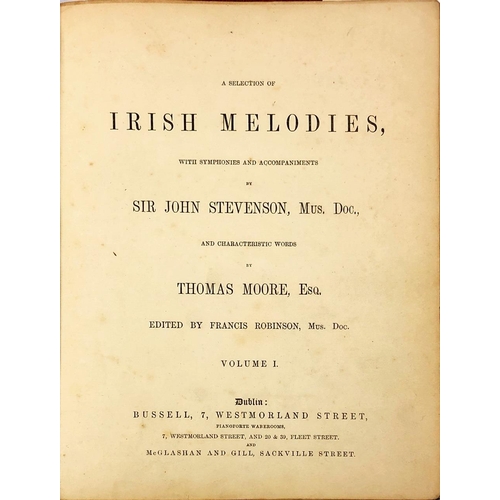
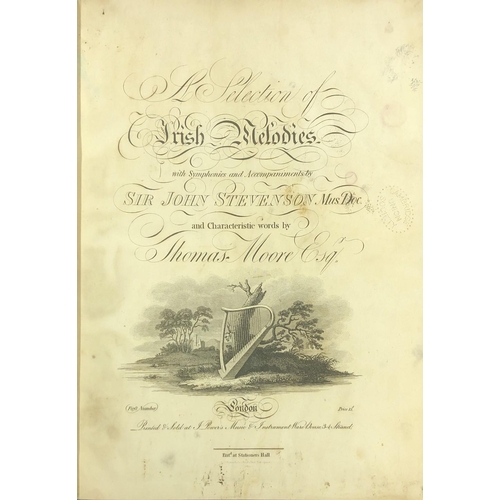



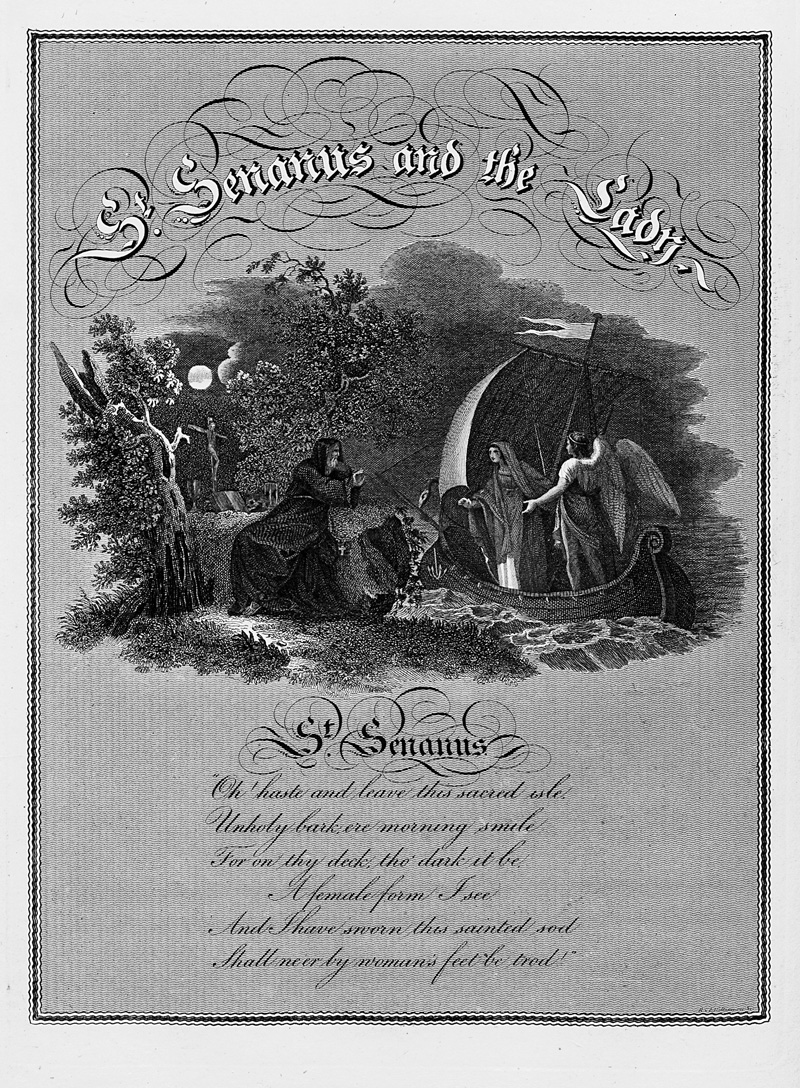

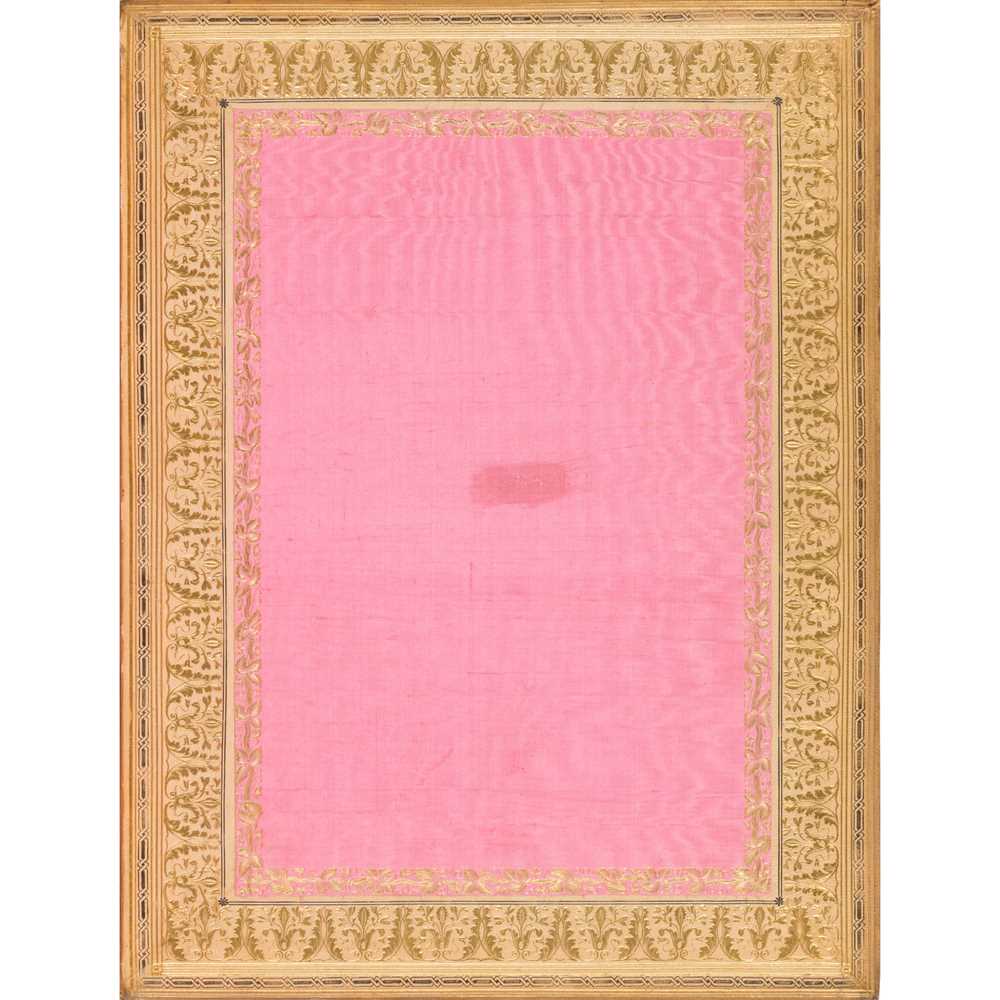



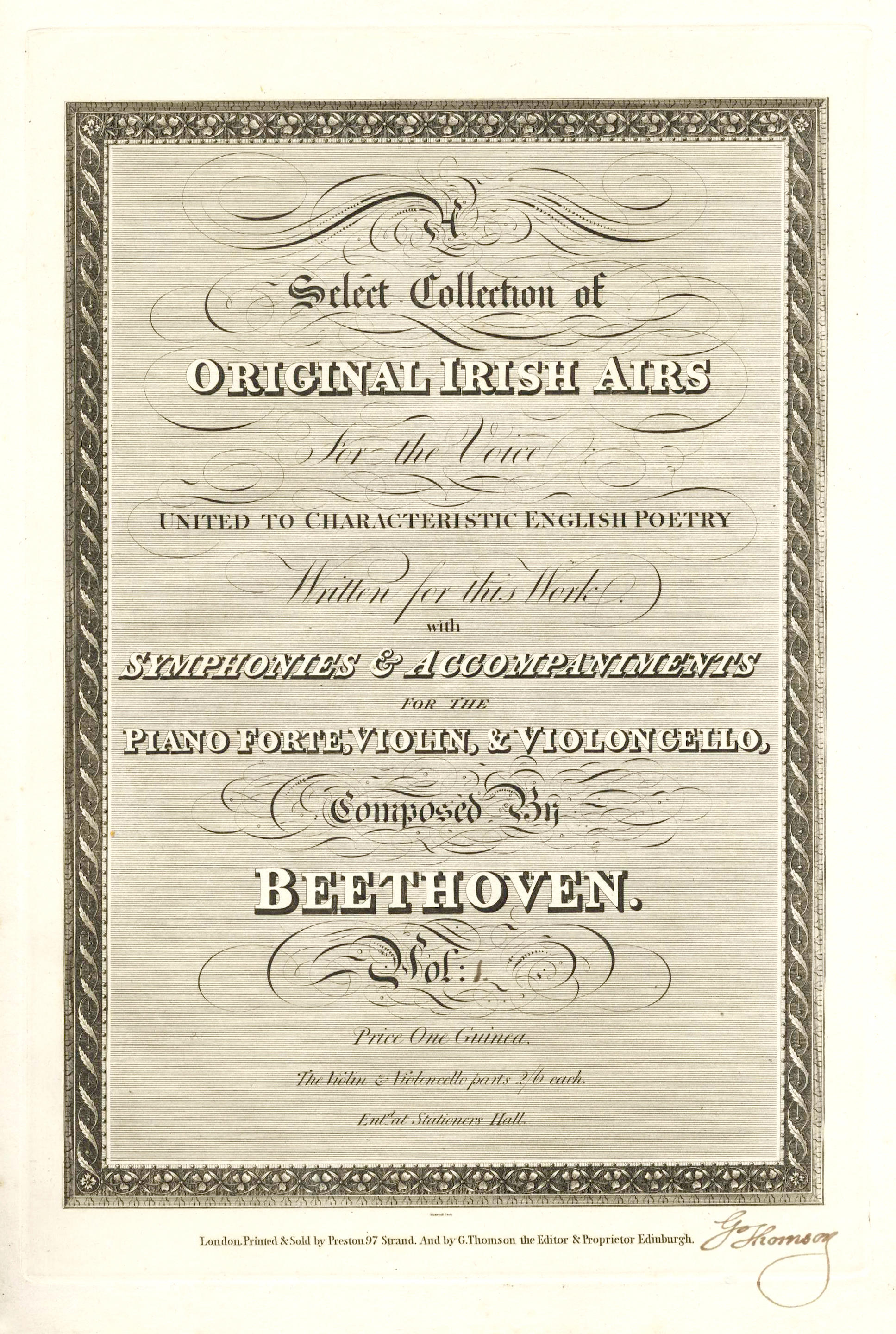


Try LotSearch and its premium features for 7 days - without any costs!
Be notified automatically about new items in upcoming auctions.
Create an alert